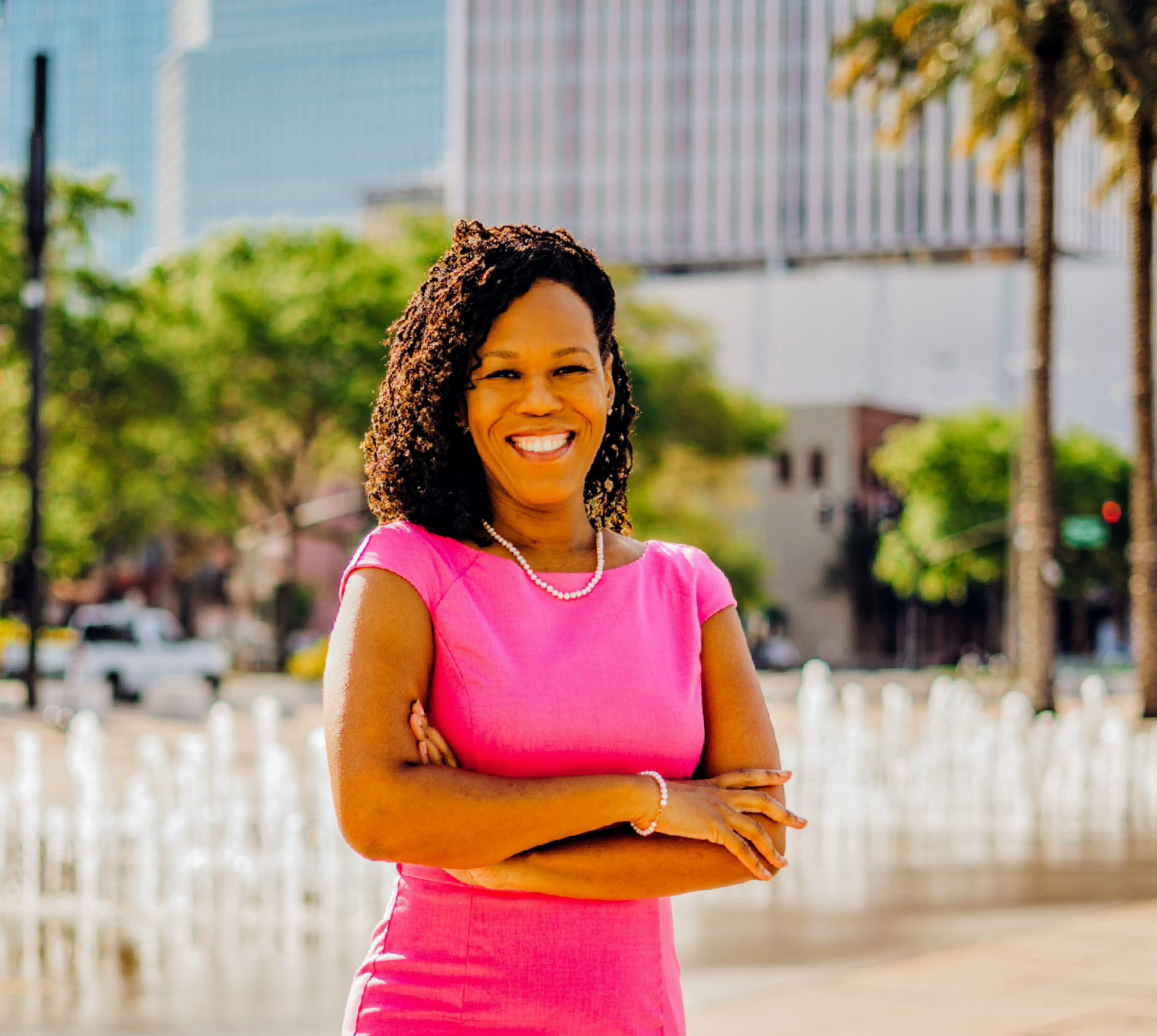Why some civil rights movement heroes were relegated to the shadows

Joseline Jean-Louis Hardrick.
I decided I wanted to be a lawyer at the age 9. As I grew older and advanced in my academic career, the harsh reality became clearer that one’s appearance, speech, background or lifestyle choice can greatly impact their opportunities and how others perceive their abilities and intelligence.
My parents, who are immigrants from Haiti, speak English with a heavy accent and did not receive their primary education in the United States. Their experiences showed me that many may be quick to judge one’s intelligence and abilities based on superficial assumptions. This, in part, influenced my decision to major in African and African American Studies in college, in order to explore the history and experience of Black people in America, especially because I learned very little prior. I knew it would help inform the work I wanted to do as a lawyer and has proven instrumental to my worldview.
In my studies, I learned that many individuals helped make the modern civil rights movement successful. The movement—which sought equal treatment of all Americans, regardless of race, gender, and sexual identity—had only a handful of “leaders”—for example, Rosa Parks, Dr. Martin Luther King Jr. and Ruth Bader Ginsburg. But these individuals stood on the shoulders of people who contributed greatly to this movement. I’d like to briefly discuss four people who deserve their time in the spotlight.
Claudette Colvin
I first learned about Claudette Colvin while studying the civil rights movement in college. In one course, my professor told us that Parks was not the first woman to refuse to give up her seat on a segregated bus, though Parks’ civil protest is often credited as the spark for the Montgomery Bus Boycott, which many consider the unofficial beginning of the modern civil rights movement. A few months prior, a young teenage girl, Colvin, refused to stand up when asked to give up her seat to a White passenger. Although she was only 15 when she performed an act of civil disobedience on the bus, years later she said, “history had me glued to the seat.”
Local organizers were aware of her protest and arrest but chose not to use her case for publicity because she was unwed and pregnant during the court proceedings—it was 1955 Alabama. Nonetheless, Colvin’s case helped set up the groundwork for segregationist policies; she was one of the five plaintiffs in Browder v. Gayle, which challenged the policies. She continued her civil rights advocacy work for several years. Colvin’s case helped me to recognize that my youth did not have to be a barrier to participate in social justice activities.
James Baldwin
James Baldwin was a brilliant writer, thinker and speaker. He consciously positioned himself as a “witness” to the civil rights movement rather than being an active participant. He had a front-row seat, befriending now-celebrated civil rights leaders Maya Angelou (who is now commemorated on a quarter—the first Black woman with that honor), Dr. King, Malcolm X and Medgar Evers. He would meet with his friends, discuss politics, life and the movement’s work, and then would write about what was going on in the American zeitgeist.
Baldwin held fast to the idea that racism was not an inherent feature of all White Americans, having had close relationships with many of them. But he deeply understood that racism permeated our systems in ways that needed to be dismantled. But once he lost three of his closest friends in quick succession, he started to lose hope in the movement’s ideals. Dr. King, Malcolm X, and Evers were all shot publicly, leaving behind wives, children and a community in sorrow.
He also struggled as a gay man in the 1950s, not necessarily closeted, but not “out and proud,” as we might describe it today. Growing up in a religious family, active in church and a preaching prodigy himself, he struggled with many identities. That struggle gave him a unique insight into the experiences of oppressed minorities and is what makes his works so relevant today. But because of his sexual orientation, he rarely received recognition in mainstream media.
Bayard Rustin
Bayard Rustin, also a gay man, was one of the architects of the civil rights movement. One common misconception about the movement is that it all happened spontaneously. But that is far from the truth. All protests, marches, litigation, and press coverage had to be organized and orchestrated by someone. Individuals like Rustin helped coordinate efforts to make sure these protests had a maximum impact.
Rustin worked with A. Philip Randolph on the March on Washington Movement, organized freedom rides and helped organize the Southern Christian Leadership Conference to strengthen Dr. King’s leadership. He also educated Dr. King about nonviolence as a form of protest and how to successfully execute it in places like Birmingham, Alabama, Little Rock, Arkansas, and other hotbeds of segregation.
Despite all his work, there was pressure to remove him from the ranks of the SCLC, and Dr. King even set up a committee to decide whether the danger of keeping him on was too great. In an interview, he described how coming out as gay was so essential to his work because “if I didn’t, I was a part of the prejudice. I was aiding and abetting the prejudice that was a part of the effort to destroy me.” He continued his civil rights work up until his death. President Barack Obama awarded Rustin posthumously with the Presidential Medal of Freedom.
Baldwin’s and Rustin’s less prominent role in the civil rights movement reminds me that allies come in all forms and identities. Those who fight for equal rights should strive to be inclusive and truly embrace the maxim of “justice for all.”
Pauli Murray
Pauli Murray was a poet-writer, activist, legal theorist and priest. Murray was directly involved in and was one of the first legal scholars to articulate the foundational theories behind the Civil Rights and Women’s Rights movements. What’s now described as “intersectionality” was what Murray called “Jane Crow.” This term highlighted the fact that both women and Black people were excluded from many segments of society. Still, when more than one category of discrimination was applied, the negative impact was exponentially worse. But for her, there existed yet another layer: She was a gender nonconforming woman. At a young age, Murray felt that she had been born in “the wrong body.” She worked for many years to obtain hormone treatment and could not receive it. She ultimately lived her life presenting as a woman and did not address these struggles in her own autobiography.
Murray was one of the early architects of the legal arguments that would become foundational in the landmark Supreme Court case Brown v. Board of Education of Topeka, Kansas. She drafted a paper articulating the theory that segregation policies were a violation of the 13th and 14th Amendments of the U.S. Constitution, which led to the lynchpin arguments in the Brown case. The late Justice Ginsburg credited Murray with doing the groundwork for her litigation regarding discrimination based on “sex” as a violation of the Equal Protection Clause.
Like Ginsburg, even after receiving a stellar education, Murray could not initially obtain employment at law firms or other legal employers due to her gender. She scraped by doing odd jobs. She eventually worked at law firms (and was at Ginsburg’s first law firm for a short period before resigning), the Equal Employment Opportunity Commission and as a professor. Her work regarding the Equal Protection Clause and its application to all people continues in the Supreme Court’s jurisprudence, helping to create the legacy of the landmark cases that have shaped modern America.
I realized through Murray’s work, that movements and historically significant moments are not the products of one individual’s work, but rather, many working behind the scenes have a tremendous impact.
These are just a few stories of unsung heroes of the civil rights movement. Many people made tremendous sacrifices and made it their lives’ work to ensure freedom and access to justice for all. I hope these stories especially touch those readers who feel marginalized because of their sexual identities, orientation or gender expression.
Editor’s note: A version of this column was published previously on the Western Michigan University Cooley Law School Blog.
Joseline Jean-Louis Hardrick is an associate professor at the Western Michigan University Thomas M. Cooley Law School. She teaches criminal law and constitutional law and assists graduates with bar preparation. She is the founder and director of Diversity Access Pipeline, a nonprofit organization that runs the Journey to Esquire Scholarship & Leadership Program, blog and podcast to promote diversity and create access for law students. She is the author of Finding Joy in the Journey to Esquire: A Guide to Renewal for Lawyers and Law Students, Bar Exam Beast Mode: Maximize Your Mindset to Beat the Bar! and several children’s books celebrating diversity and encouraging mindfulness in children.
ABAJournal.com is accepting queries for original, thoughtful, nonpromotional articles and commentary by unpaid contributors to run in the Your Voice section. Details and submission guidelines are posted at “Your Submissions, Your Voice.”
This column reflects the opinions of the author and not necessarily the views of the ABA Journal—or the American Bar Association.
Your Voice submissions

The ABA Journal wants to host and facilitate conversations among lawyers about their profession. We are now accepting thoughtful, non-promotional articles and commentary by unpaid contributors.

